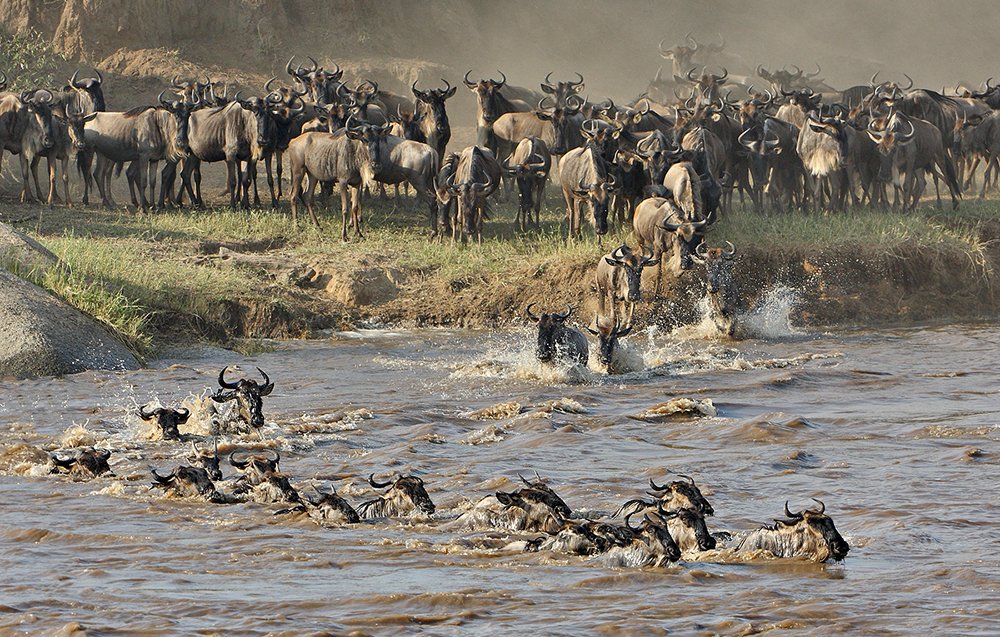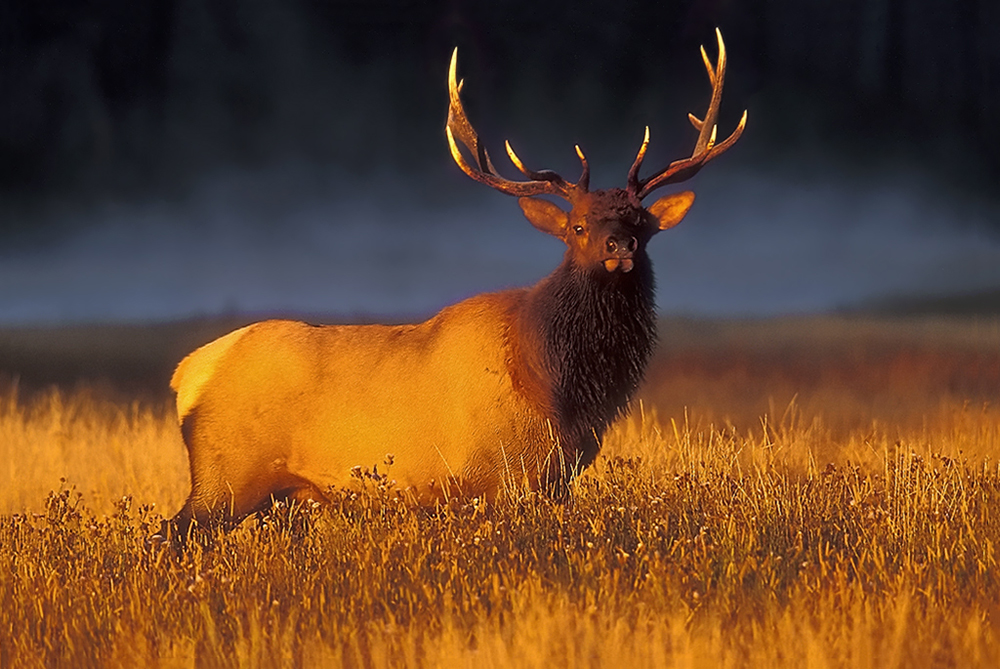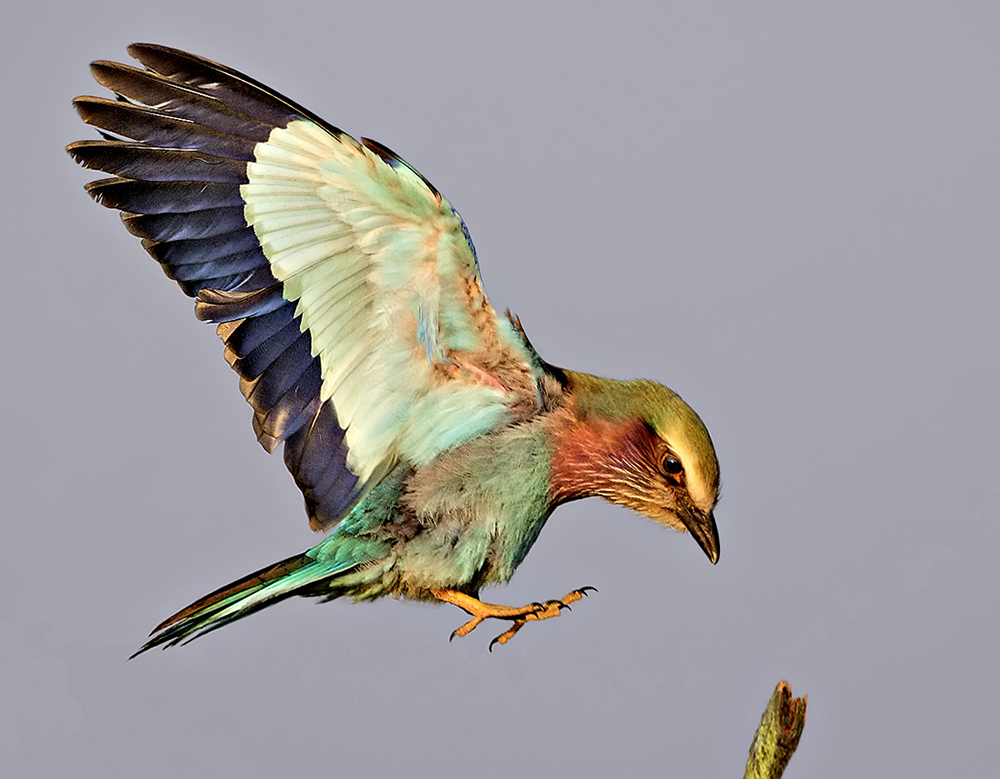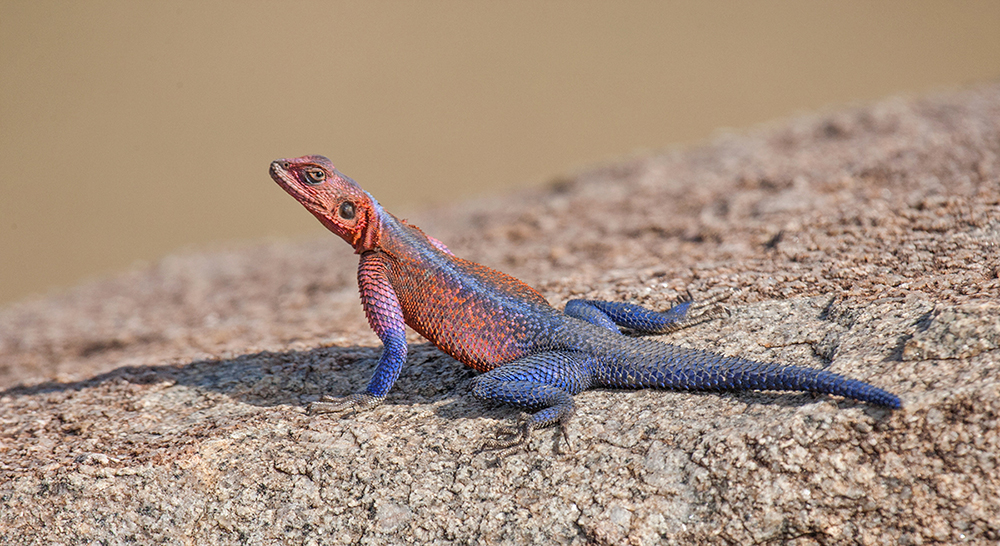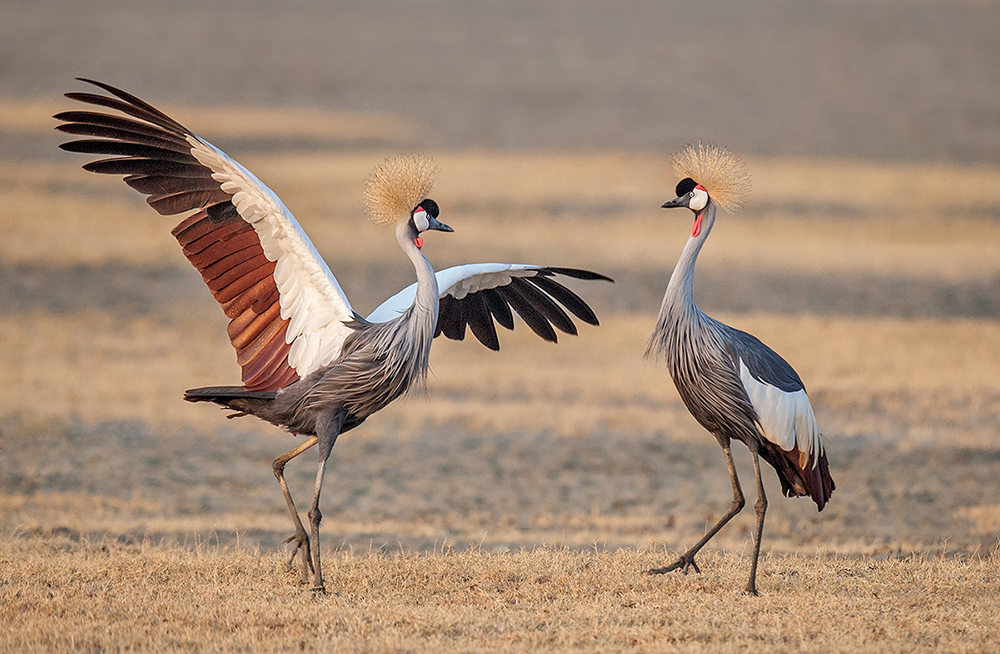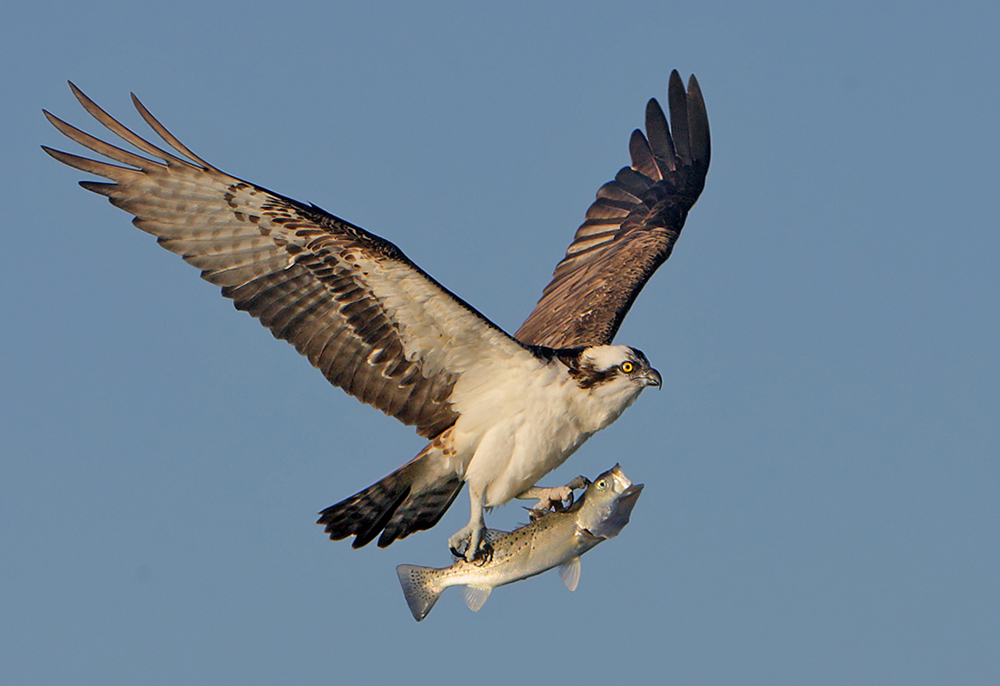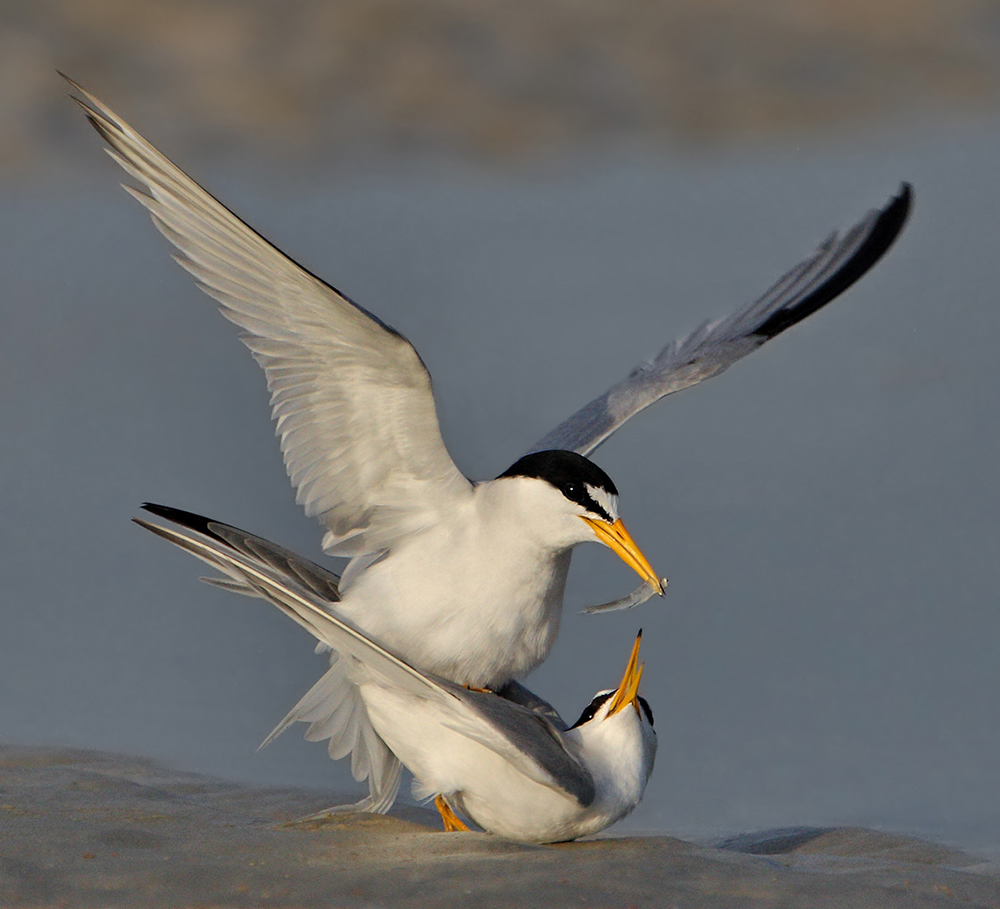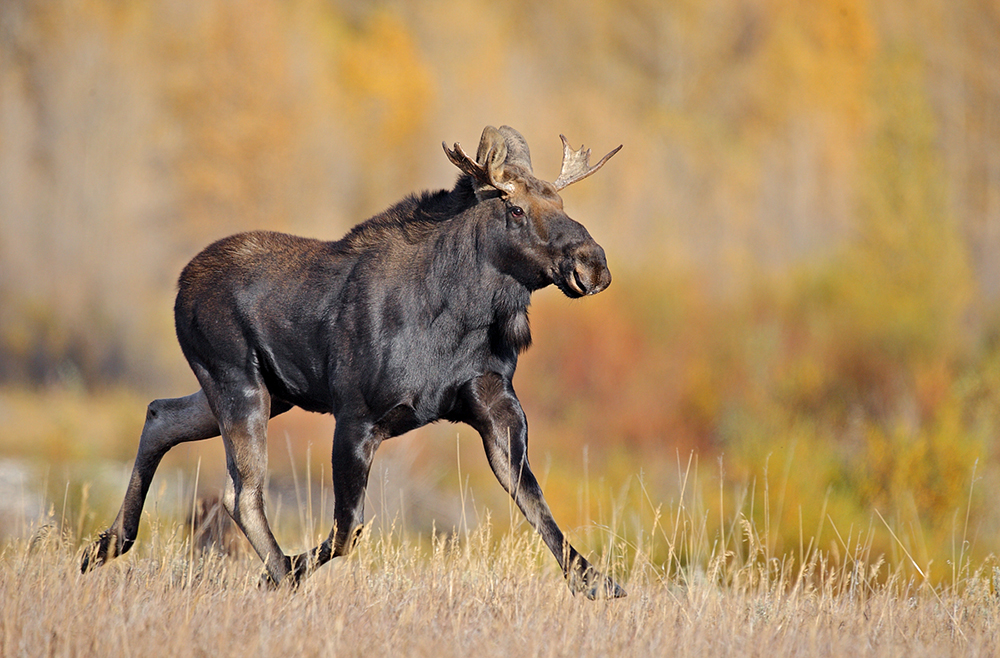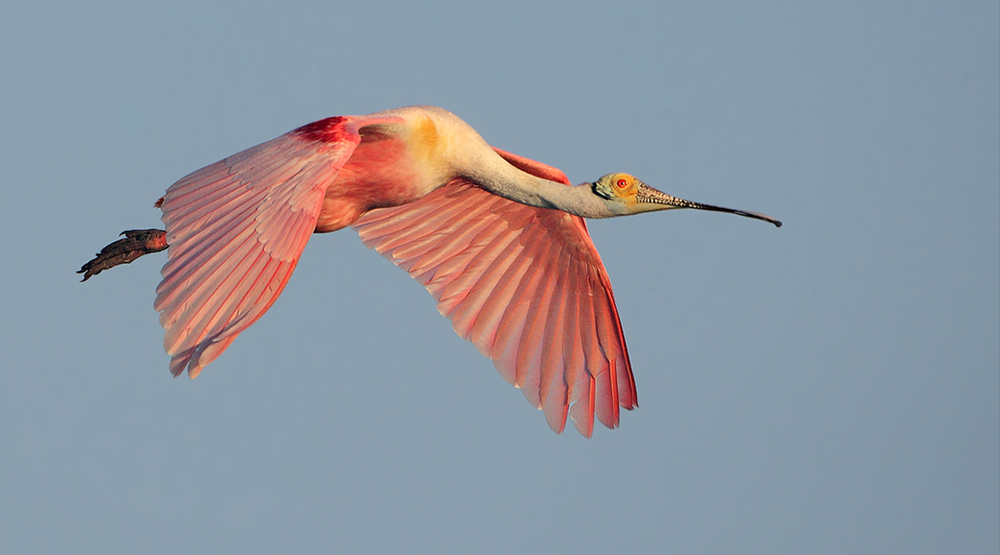As a wildlife photographer, I often get asked the question: “What is your favorite lens?” My quick reply often surprise people: “the Sigma 300-800mm f/5.6 lens”. Here is a short list of my responses to the question: why?
Versatility
No other lens on the market today offers the versatility or range that the Sigma 300-800mm f/5.6 does! Wildlife by nature is wild and does not stand still in one place for very long so the versatility of the zoom range allows me to compose and recompose as the situation dictates! In many locations it is difficult if not impossible to reposition yourself in order to be able to compose the action. In the images above of the wildebeest, I am able to shoot wider (at 4006mm) to compose the entire scene of a crossing or zoom in tighter (687mm) to capture the action like I did in the image at the very top. This allows me the flexibility of composition that no fixed focal length lens can match!
The slide image of the elk above from 7 years ago represents just how important that versatility is! It was the first year I bought the lens and I was looking forward to testing it out in Yellowstone National Park. I had set up at the edge of a field with a group of photographers who all had long fixed focal length lenses patiently waiting for the sun to illuminate the bull elk. I was maxed out at 800mm and many of the other photographers had put their 1.4 teleconverters on their 500mm and 600mm lenses in order to keep a safe distance. Quite unexpectedly, the bull elk charged at the group into the sunlight and turned. I simply zoomed out to 300mm and clicked away! I just had enough room to squeeze the majestic elk into the frame so I knew that the other photographers had to clip parts of the animal compositionally. That day proved to me how the versatility of the lens would come in handy in the years to come. Wildlife is unpredictable so a zoom lens allows you to recompose effortlessly without wasting time trying to reposition yourself with a fixed focal length lens.
Reach
The extra reach of the lens at 800mm also comes in handy when photographing smaller subject like the lilac breasted roller above or the Agama lizard below. If you have ever tried finding or tracking a moving subject at 800mm, you know how difficult the task can be! The versatility or the lens comes in handy here as well as I simply zoom out to 300mm to find my subject and then zoom in as I acquire and track my subject. The speed and acquisition may be a touch faster on a fixed focal lens but it is not significant enough to outweigh the other lenses deficiencies when it comes to versatility. If you had to match the range or the Sigma 300-800mm f/5.6, you would have to spend approximate $20,000+ to match that range and still not get the versatility provided in one package!
Other Considerations
Once people see the size of the lens, they often ask me about the weight. At almost 13 lbs., the Sigma 300-800mm f/5.6 weighs in at a few pounds more that the fixed focal length 600mm lenses from other manufacturers but if you combine the weight of the extra teleconverters and lenses you would need to equal the versatility of the one Sigma lens then the others would come in substantially heavier than the Sigma 300-800mm! Another downside to purchasing the other lenses to match the range or the Sigma 300-800mm f/5.6 would be that your wallet will be much lighter as well!!!
Don’t forget that most of the time, you aren’t traveling very far with the lens and even though in the image above of the dancing Crowned Cranes I was resting the lens on a bean bag, I almost always have it on a tripod with a gimbal style head such as the Induro GHB2, which makes it almost effortless to use.
Conclusion
Whether you are into bird photography or larger animals, the Sigma 300-800mm f/5.6 is unmatched in its versatility and reach when it comes to wildlife photography. I bought mine over 7 years ago and it has traveled the world and been through rain, snow, dust, heat and cold and it still is going as strong as the first day I bought it. That means you can add durability to the list of what makes it the best wildlife photography lens on the market today!!! You can find more of my images on my website and blog: www.roaminwithroman.com and I have added below just a few more examples of some of the images taken with that lens.
